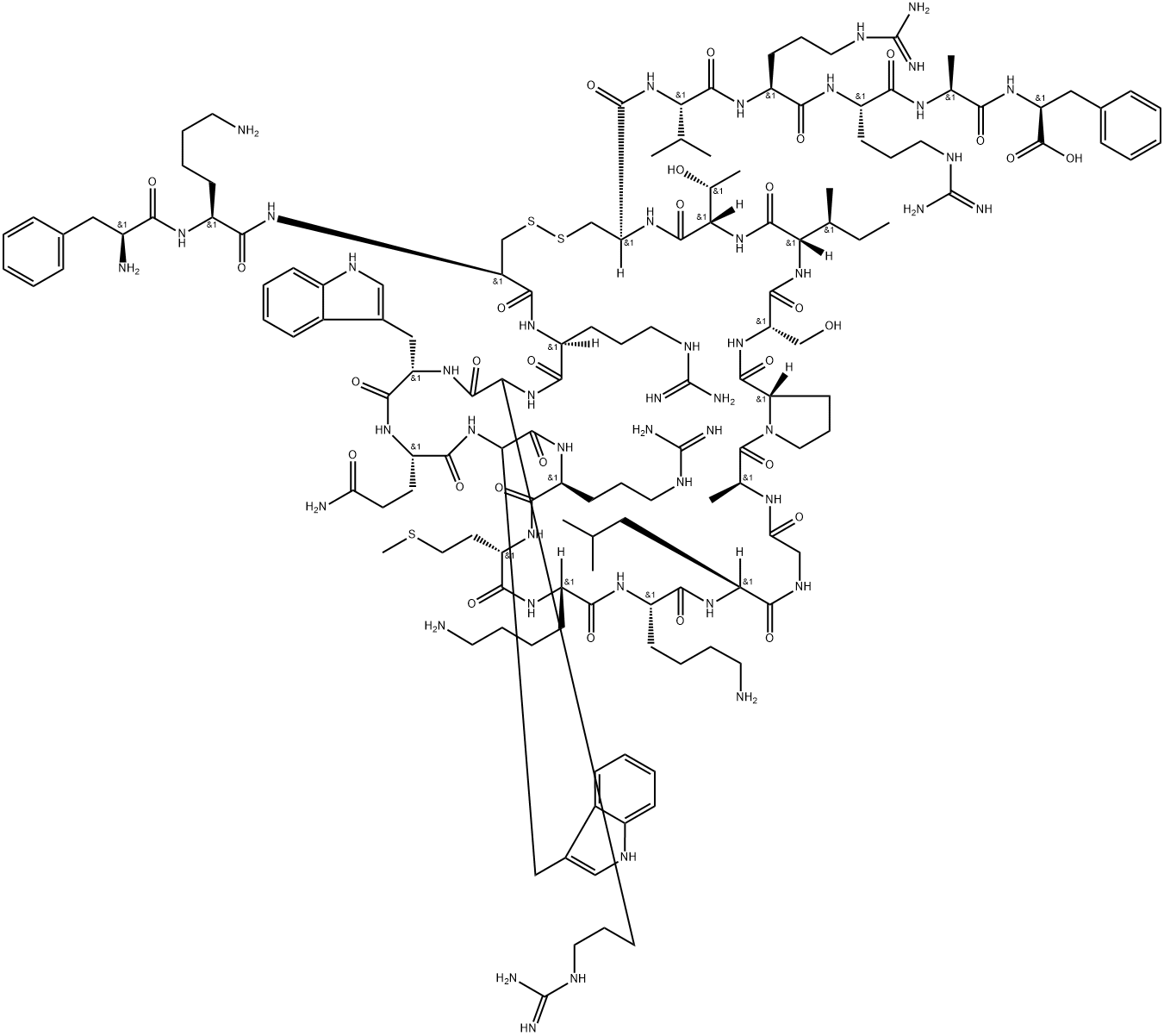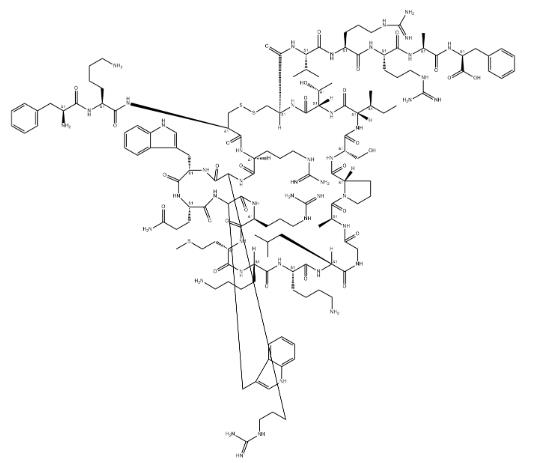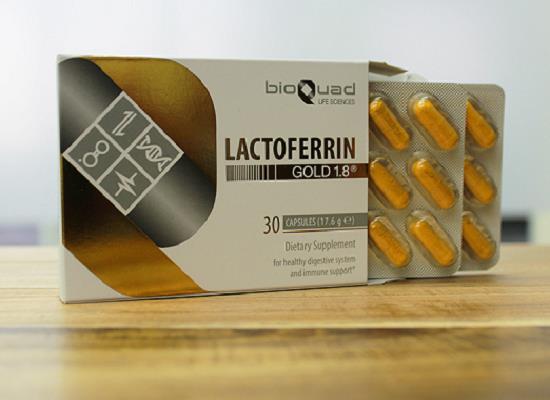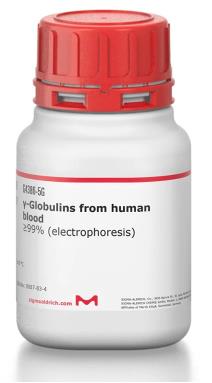Lactoferrin:Activity and application studies
General Description
Lactoferrin, a prominent protein in milk, many other secretory fluids and white blood cells, is a monomeric, 80-kDa glycoprotein, with a single polypeptide chain of about 690 amino acid residues.[1]Lactoferrin in milk is synthesized in the mammary gland by secretory epithelial cells, reaching concentrations as high as 5–8 mg/mL in human colostrum and 1–3.2 mg/mL in mature milk and accounting for 15–20% of total milk proteins.Lactoferrin is also produced by the secondary granules of polymorphonuclear (PMN) leukocytes, which store this glycoprotein (3–15 µg/106 neutrophils) and release it at sites of infection.[4]Originally,Lactoferrin was viewed as an iron-binding protein in milk, with bacteriostatic properties,and it possesses various biological functions, including roles in iron metabolism, cell proliferation and differentiation, and antibacterial, antiviral, and antiparasitic activity.[2]Lactoferrin is also a multifunctional protein to which several physiological roles include regulation of iron homeostasis, host defense against a broad range of microbial infections, anti-inflammatory activity, regulation of cellular growth and differentiation and protection against cancer development and metastasis.[3]
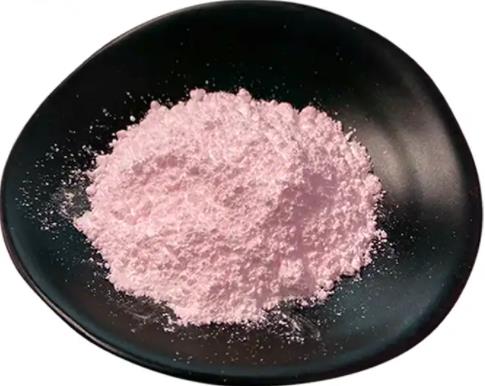
Figure 1 Powder of Lactoferrin
Activity
1.Bactericidal effect of lactoferrin:This bactericidal activity is not irondependent and may be mediated through more than one pathway. Receptors for the N-terminal region of lactoferrin have been discovered on the surface of some microorganisms. The binding of lactoferrin to these receptors induces cell-death in Gram-negative bacteria due to a disruption in the cell wall. The subsequent release of lipopolysacharide (LPS) leads to impaired permeability and a higher sensitivity to lysozyme and other antimicrobial agents. LPS can be disposed of even without the direct contact of lactoferrin with the cell surface.The antibacterial activity of lactoferrin is related, among others, to the ability to bind iron ions, which is required for certain bacteria and fungi growth (Streptococcus, Salmonella, Shigella, Staphylococcus, Enterobacter and H. pylori) as well as biofilm formation. Moreover, lactoferrin by binding to fimbrial adhesins of bacteria prevents adhesion of pathogens to epithelial cells of the host intestines. Blocking the stage of bacterial adhesion on the cell surface prevents them from getting inside the cell and further stages of infection.[5]
2.The antiviral effect of lactoferrin:The antiviral effect of lactoferrin is primarily due to binding to the host cell’s membrane glycosaminoglycans and preventing viruses invasion into host cells. So far, the effect of lactoferrin has been confirmed, including herpes virus types 1 and 2, human cytomegalovirus, human immunodeficiency virus (HIV), human papillomavirus (HPV), rotavirus, enterovirus, adenovirus, influenza virus, parainfluenza virus, hepatitis C virus (HCV), hepatitis B virus (HBV) and SARS-CoV-2. Lactoferrin may contribute to defence against different species of Candida by altering its cell wall integrity causing surface blebs formation, and finally cell death. Additionally, Lactoferrin has been used in synergy with different antifungal drugs against different yeasts such as C. dubliniensis, C. albicans, C. glabrata, and Cryptococcus, where their effect was potentiated.[6]
3.Antitumor action of the lactoferrin:Lactoferrin is able to inhibit or activate cell division and movement. Administration of Lactoferrin has been shown to inhibit or even prevent tumor growth by activating the adaptive immune response or decreasing the expression of growth factor protein. Moreover, it increases the expression of surface receptors on neoplastic cells, facilitating their identification by the immune system. the anti-cancer activity of lactoferrin may also be related to its ability to inhibit angiogenesis and the growth of blood vessels to the tumor. it reduces the size of tumors and the possibility of metastasis formation. Lactoferrin also has a lytic effect on cancer cells. Importantly, it acts selectively, showing greater cytotoxicity towards neoplastic cells than normal ones. Furthermore, it was shown that bovine Lactoferrin exerts a cytotoxic effect on fibrosarcoma, melanoma, head and neck, as well as colon cancer cells, and inhibits the proliferation of lung cancer cells.[6]
4.Anti-apoptotic or pro-apoptotic effects of the Lactoferrin:On the basis of the assessment of events that depend on V-ATPase function,Lactoferrin can inhibit cell proliferation, induce apoptosis, diminish extracellular acidification rate, and increase intracellular acidification due to inhibition of the proton pumping and ATP hydrolytic activities of V-ATPase.Moreover, lactoferrin-induced apoptotic process in yeast, such as C. albicans and S. cerevisiae, is one of the element of its antifungal activity as well as bacteria, such as Lactococcus lactis and Pseudomonas aeruginosa. Human lactoferrin can induce apoptosis in Candida albicans thrush cells, which includes phosphatidylserine transformations, nuclear chromatin condensation, DNA damage and excessive production of reactive oxygen species (ROS) in mitochondria causing their depolarization.On the other side, Lactoferrin was found to inhibit the apoptosis in osteoblasts and osteoclasts as well as neutrophils.[6]
Application
Lactoferrin is a major multiple bioactive glycoprotein in human milk but little is presented in infant formula. Lactoferrin can resist digestion in the infant gastrointestinal tract and is absorbed into the bloodstream in an intact form to perform physiological functions. Evidence suggest that Lactoferrin prevents pathogen infection, promotes immune system development, intestinal development, brain development and bone health, as well as ameliorates iron deficiency anemia.[7]Lactoferrin is a nutrient classically found inmammalianmilk. It binds iron and is transferred via a variety of receptors into and between cells, serum, bile, and cerebrospinal fluid. It has important immunological properties, and is both antibacterial and antiviral. In particular, there is evidence that it can bind to at least some of the receptors used by coronaviruses and thereby block their entry. Of importance are Heparan SuLactoferrinate Proteoglycans (HSPGs) and the host receptor angiotensin-converting enzyme 2 (ACE2), as based on other activities lactoferrin might prevent severe acute respiratory syndrome coronavirus 2 (SARS-CoV-2) from attaching to the host cells. Lactoferrin (and more specifically enteric-coated Lactoferrin because of increased bioavailability) may consequently be of preventive and therapeutic value during the present COVID-19 pandemic.[8]
Reference
[1] Baker EN, Baker HM. Lactoferrin.Cell. Mol. Life Sci.2005,62, 2531.
[2] Adlerova L, Bartoskova A, Faldyna M.Veterinární Medicína, 2008, 53(9):457-468.
[3] Ward PP, Paz E, Conneely, O.M. Lactoferrin.Cell. Mol. Life Sci.2005,62, 2540.
[4] Zarzosa-Moreno D, Avalos-Gómez C, Ramírez-Texcalco LS, et al. Lactoferrin and Its Derived Peptides: An Alternative for Combating Virulence Mechanisms Developed by Pathogens[J].Molecules. 2020,25(24):5763.
[5] Adlerova L, Bartoskova A, Faldyna Met,al.Lactoferrin: a review[J]. Veterinární Medicína.2008, 53(9):457-468.
[6] Bukowska-O?ko I, Sulejczak D, Kaczyńska K. Lactoferrin as a Human Genome Guardian-An Overall Point of View[J]. Int J Mol Sci. 2022,23(9):5248.
[7] Li W, Liu B, Lin Y, et al. The application of lactoferrin in infant formula: The past,present and future[J].Critical Reviews in Food Science and Nutrition.2022.
[8] Kell DB, Heyden EL, Pretorius E. The Biology of Lactoferrin, an Iron-Binding Protein That Can Help Defend Against Viruses and Bacteria[J].Front Immunol. 2020,11:1221.
You may like
Related articles And Qustion
See also
Lastest Price from Lactoferrin manufacturers
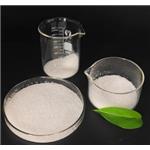
US $1000.00-800.00/kg2025-04-21
- CAS:
- 146897-68-9
- Min. Order:
- 1kg
- Purity:
- 99%
- Supply Ability:
- 5000
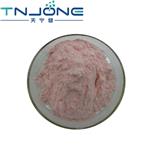
US $0.00/kg2025-04-02
- CAS:
- 146897-68-9
- Min. Order:
- 1kg
- Purity:
- 99%
- Supply Ability:
- 1000kg
